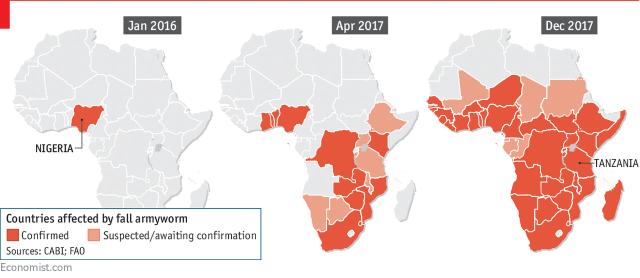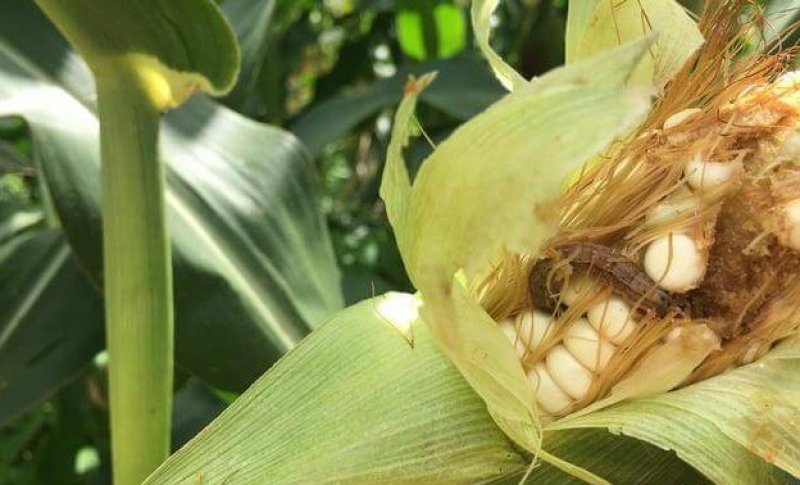When just a hungry caterpillar, the fall armyworm will happily munch on more than 80 plant species. But its favourite is maize—the staple for more than 200m sub-Saharan Africans. The UN’s Food and Agriculture Organisation (FAO) estimates that sub-Saharan Africa has about 35m hectares of maize grown by smallholders, and that almost all of it is now infested or at risk of infestation.
If the pest is not controlled, it could gobble up as much as 20% of the region’s total maize crop.
…
Originally from the Americas, these worms were a plague there for hundreds of years. Yet American farmers have beaten them back with the help of genetically modified plants and advanced pesticides. By contrast, the worms are meeting little resistance in Africa.
…
Allan Hruska of the FAO hopes … to teach farmers to use some of the techniques that smallholders in the Americas have long used. These include mixing crops, encouraging natural predators and patrolling fields to crush the eggs by hand.
Better still would be to copy America’s commercial farmers, who plant GM crops that are largely resistant to the worm. Almost all African countries apart from South Africa have formally or informally banned GM crops, following iffy advice from ecowarriors. Lifting these restrictions would lead to fewer hungry caterpillars and fewer hungry people.

Read full, original post: An army of worms is invading Africa































